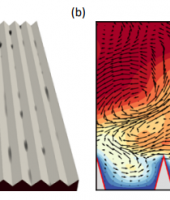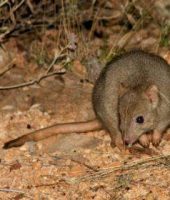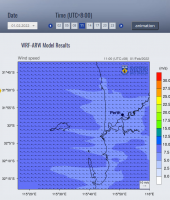RSSRG
We had 3 main projects using Nimbus in 2021. 1 - A project funded by WASTAC ("small research grant" call), named "A Pilot Study In Improving The Health of At-Risk Western Australian Estuaries: Assessing The Relationship Between On-Land Water Use and Estuarine Health." The objective is to assess whether there is significant impact of changes in land cover and land use on water quality in estuaries. 2- A project called "Seamless and future-proof satellite ocean colour data for Australia". We aim here at developing a processing framework to generate satellite ocean colour (OCR) multi-mission merged gridded (Level 3) products for Australian open ocean and coastal waters. We use complementary observations from several satellites currently operating. Primary candidate sensors are 2xOLCI, 2xVIIRS and MODIS from the Sentinel, JPSS and NASA-EOS missions respectively. Ingestion of top-of-atmosphere data from each sensor through a common atmospheric correction will generate consistent marine reflectances and geophysical products. These will be merged and presented at a range of spatio-temporal resolutions appropriate to Australian research needs. 3 – Preparatory activities for the future AquaWatch satellite mission, with an activity related to running radiative transfer codes to generate "Lookup Tables" of the top-of-atmosphere (TOA) radiometric signal to be subsequently used in processing chains.
Area of science
Earth Sciences
Systems used
Nimbus
Applications used
NetCDF, gfortran, python, docker, ghostscript (others are applications we install: GMT, NASA SeaDAS, ESA SNAP, ACOLITE)The Challenge
Project #1 requires processing large numbers of Sentinel2/MSI and Sentinel3/OLCI satellite products.
Projects #2 requires significant processing capability to test the algorithms we will develop. It involves processing Sentinel3A/B-OLCI, Aqua-MODIS and SNPP-VIIRS products.
Project #3 requires massive numbers of radiative transfer computations, needed to generate top-of-atmosphere radiances in various configurations.
These 3 projects need significant CPU and storage capability, which is what Nimbus can provide.
The Solution
The ACOLITE software is used for processing of Sentinel2 products (Project #1) (https://odnature.naturalsciences.be/remsem/software-and-data/acolite). It is among the best solution for deriving water products from this mission, which is essentially designed for, and dedicated to, land applications.
As for project #2, we use our own developed processing code.
Project #3 uses the “OSOAA” radiative transfer code (Chami M, Lafrance B, Fougnie B, Chowdhary J, Harmel T, Waquet F (2015), “OSOAA: a vector radiative transfer model of coupled atmosphere-ocean system for a rough sea surface application to the estimates of the directional variations of the water leaving reflectance to better process multi-angular satellite sensors data over the ocean”, Opt Express 23: 27829-27852 | doi: 10.1364/OE.23.027829)
The Outcome
We use Nimbus for:
– Processing large volumes of satellite ocean colour products that we get in particular from the Copernicus Australasia Data Hub (Sentinel 3A/B-OLCI and Sentinel 2A/B-MSI)
– Testing various algorithms for the above processing
– Running large numbers of radiative transfer computations
We use the Nimbus capability in particular to develop tools that might then be transferred onto bigger computing environments like Gadi at the NCI.
Nimbus offers the flexibility we need to fully test these processing codes.







